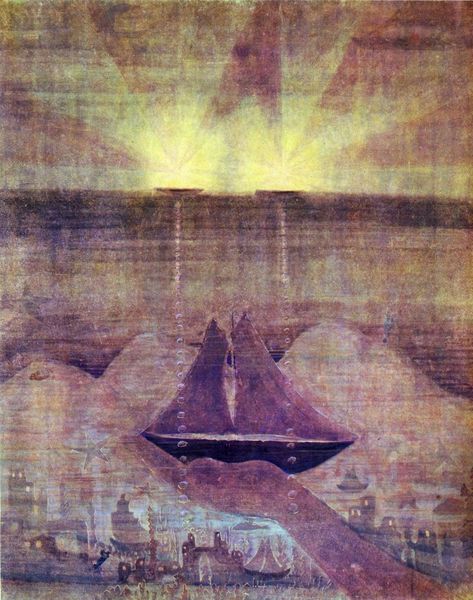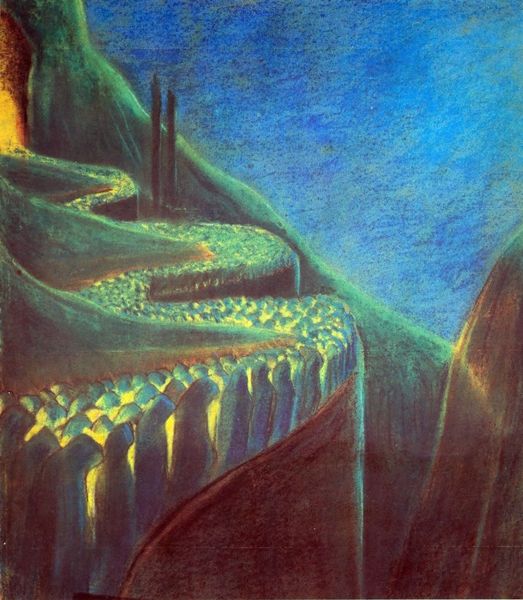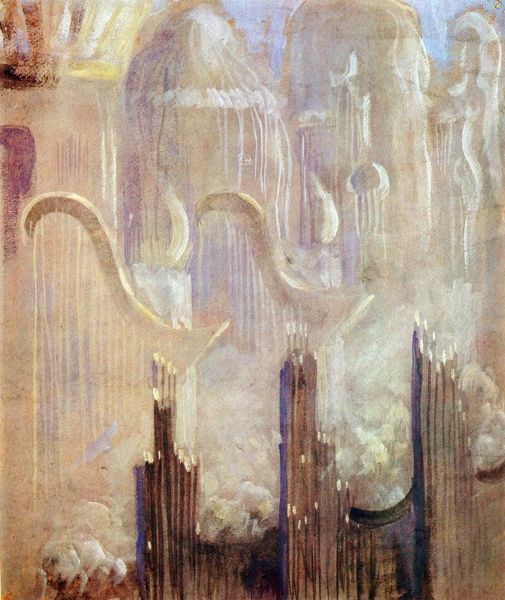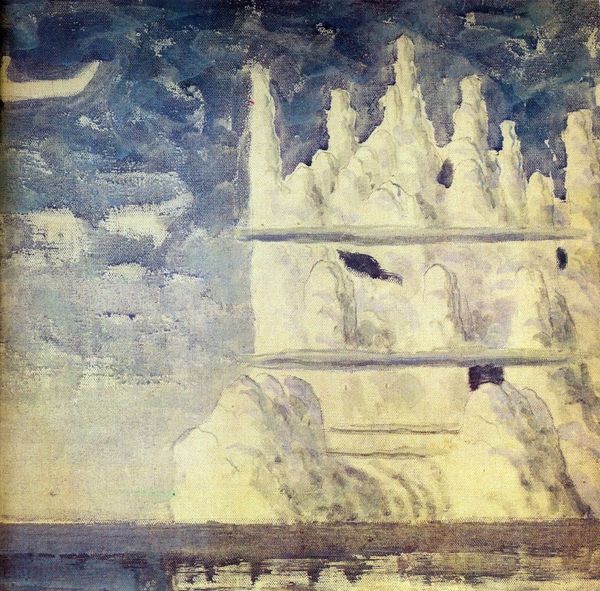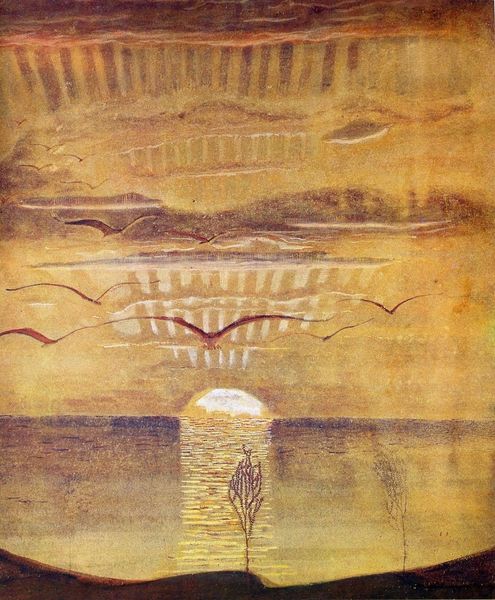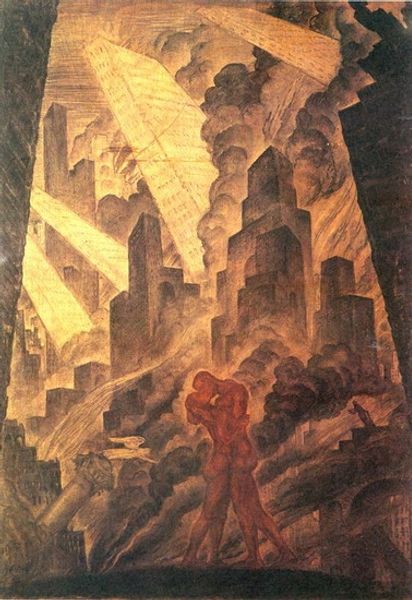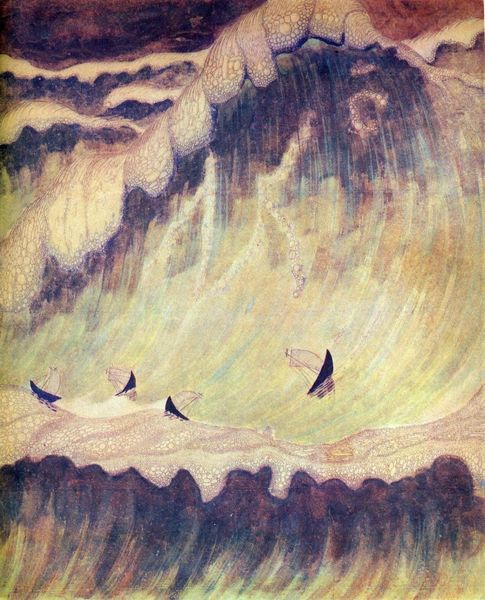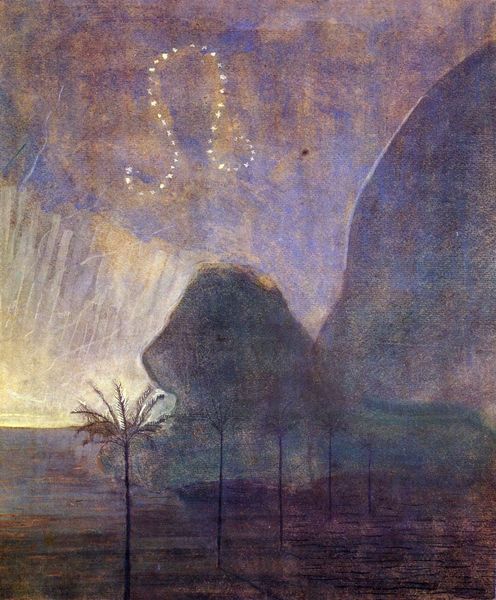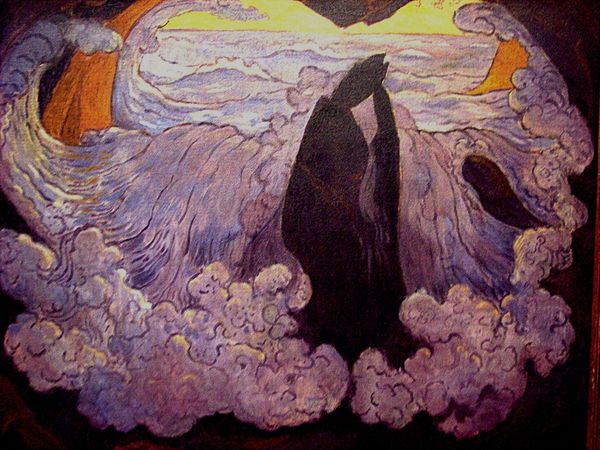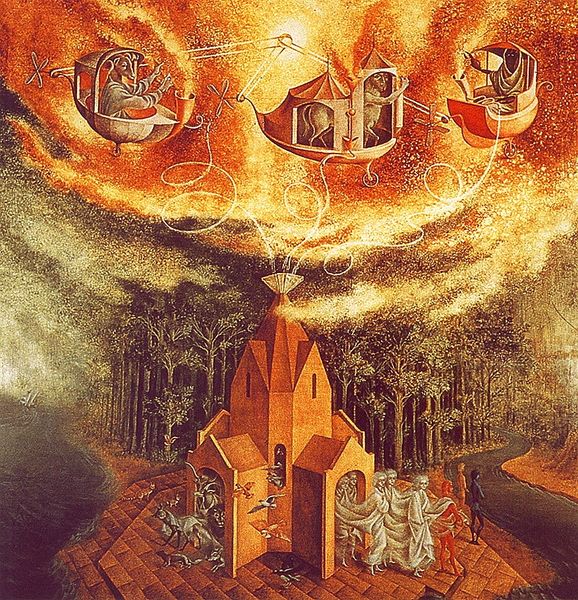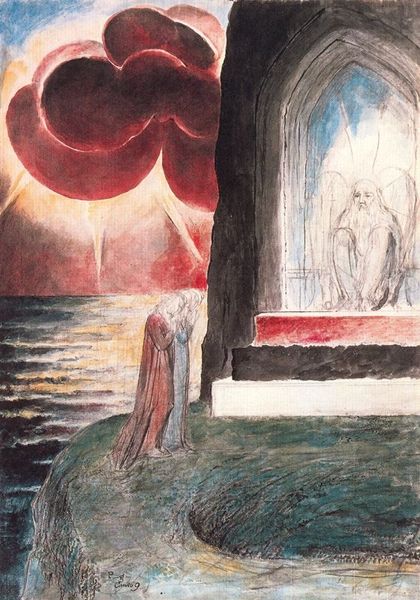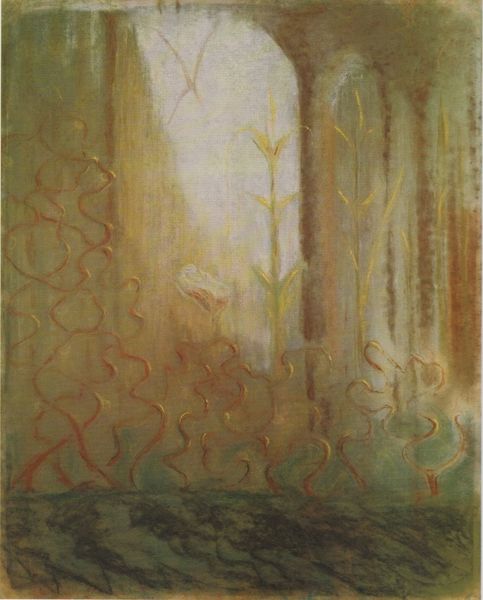
tempera, painting
#
abstract painting
#
tempera
#
painting
#
landscape
#
oil painting
#
geometric
#
expressionism
#
abstraction
#
symbolism
#
expressionist
Dimensions: 73.5 x 61.5 cm
Copyright: Public domain
Curator: Good morning. We’re standing before Mikalojus Konstantinas Čiurlionis’ “Hymn (II),” painted in tempera in 1906. A fascinating example of symbolism intertwined with nascent abstraction. Editor: My first impression is a kind of awe, a devotional quality almost. It's dominated by this central, cascading structure of light – something between a mountain and a celestial waterfall. Curator: Precisely. Čiurlionis was deeply interested in the synthesis of music and painting. He titled many of his works as "sonatas" or "preludes," attempting to create visual equivalents of musical forms. Here, "Hymn (II)" resonates with the structural dynamics and repetitive motifs found in hymns. The linear procession of figures at the horizon line almost reads as notes on a staff. Editor: Considering its creation in the early 20th century, the layering of paint gives an interesting tactile presence. It is neither purely landscape nor purely abstract; this hybridity reveals a focus on the materiality of the pigment, the texture it builds. Did Čiurlionis have an explicit interest in the making process? Curator: One might analyze this work as representing a quasi-mystical, cosmological realm, expressed through a sophisticated manipulation of form and color. Notice how the cool blues and whites of the central form contrast with the warmer earth tones of the landscape—creating depth. Editor: The materials, though perhaps not extravagant, communicate both transcendence and earthiness. The figures – likely painted using some sort of self-made brushes for texture– represent humanity on its pilgrimage. I’m drawn to the fact that Čiurlionis clearly prioritizes process, making visible his engagement with tempera. The resulting work hints at a ritual or meditative practice that the artist performed to create "Hymn (II)." Curator: I find this work to express the symbolist movement's concern with inner experience – the attempt to visually convey the invisible world of spiritual feeling. I love that, to me, it doesn't look labored over. It’s as though it came to him in a stream. Editor: So while you see it as a symbol, I see evidence of work: The physical embodiment of the concept – its labour! Ultimately, however, we are perhaps not that far from one another on a journey.
Comments
No comments
Be the first to comment and join the conversation on the ultimate creative platform.
